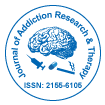Nuestro grupo organiza más de 3000 Series de conferencias Eventos cada año en EE. UU., Europa y América. Asia con el apoyo de 1.000 sociedades científicas más y publica más de 700 Acceso abierto Revistas que contienen más de 50.000 personalidades eminentes, científicos de renombre como miembros del consejo editorial.
Revistas de acceso abierto que ganan más lectores y citas
700 revistas y 15 000 000 de lectores Cada revista obtiene más de 25 000 lectores
Indexado en
- Índice de fuentes CAS (CASSI)
- Índice Copérnico
- Google Académico
- sherpa romeo
- Abrir puerta J
- Revista GenámicaBuscar
- Claves Académicas
- TOC de revistas
- SeguridadIluminado
- Infraestructura Nacional del Conocimiento de China (CNKI)
- Biblioteca de revistas electrónicas
- Búsqueda de referencia
- Universidad Hamdard
- EBSCO AZ
- OCLC-WorldCat
- Catálogo en línea SWB
- Biblioteca Virtual de Biología (vifabio)
- publones
- Fundación de Ginebra para la educación y la investigación médicas
- Pub Europeo
- ICMJE
Enlaces útiles
Revistas de acceso abierto
Comparte esta página
Abstracto
Antidepressant Treatment Adherence among Homeless Population
Dejene Lemessa
Inequality to mental health treatment among homeless populations in the U.S has become a major national concern, and non-adherence to antidepressant treatment is increasing. To address this problem, a systemic literature review was conducted to identify interventions that can improve antidepressant treatment adherence among this population in primary care settings. A literature search using CINAHL, PubMed, EMBASE, PsychINFO, and Google Scholar electronic databases yielded 6,041 studies that were reviewed according to several inclusion criteria: studies published in peer-reviewed journals between 2013 and 2017, sufficient racial ethnic representation from underserved groups, randomized control trial to improve adherence to prescribed antidepressants, participants with primary diagnosis of depression, follow up period of at least 6 months. Ten studies met inclusion criteria. Evidence revealed that improving antidepressant treatment adherence among underserved communities requires multifaceted interventions that employ the following: a) shared decision making, b) practice-based collaborative care and telemedicine collaborative care, and c) treatment retention and therapy participation. Interventions that can improve antidepressant treatment adherences in the homeless communities are multilayered. However, shareddecision making and collaborative care between patients and providers is critical in realizing positive outcomes. Because depression is chronic and recurring, continuous supportive services are needed. Some interventions have to be tailored to specific homeless patients depending on their response to therapy and treatment.
Revistas por tema
- Agricultura y acuicultura
- Alimentación y Nutrición
- Bioinformática y biología de sistemas
- Bioquímica
- Ciencia de los Materiales
- Ciencia general
- Ciencias Ambientales
- Ciencias Clínicas
- Ciencias farmacéuticas
- Ciencias Médicas
- Ciencias Sociales y Políticas
- Ciencias Veterinarias
- Enfermería y atención sanitaria
- Física
- Genética y biología molecular
- Geología y Ciencias de la Tierra
- Ingeniería
- Inmunología y Microbiología
- Química
Revistas clínicas y médicas
- Anestesiología
- Biología Molecular
- Cardiología
- Cirugía
- Cuidado de la salud
- Dermatología
- Diabetes y Endocrinología
- Enfermedades infecciosas
- Enfermería
- Gastroenterología
- Genética
- Inmunología
- Investigación clínica
- Medicamento
- Microbiología
- Neurología
- Odontología
- Oftalmología
- Oncología
- Pediatría
- Toxicología

 English
English  Chinese
Chinese  Russian
Russian  German
German  French
French  Japanese
Japanese  Portuguese
Portuguese  Hindi
Hindi